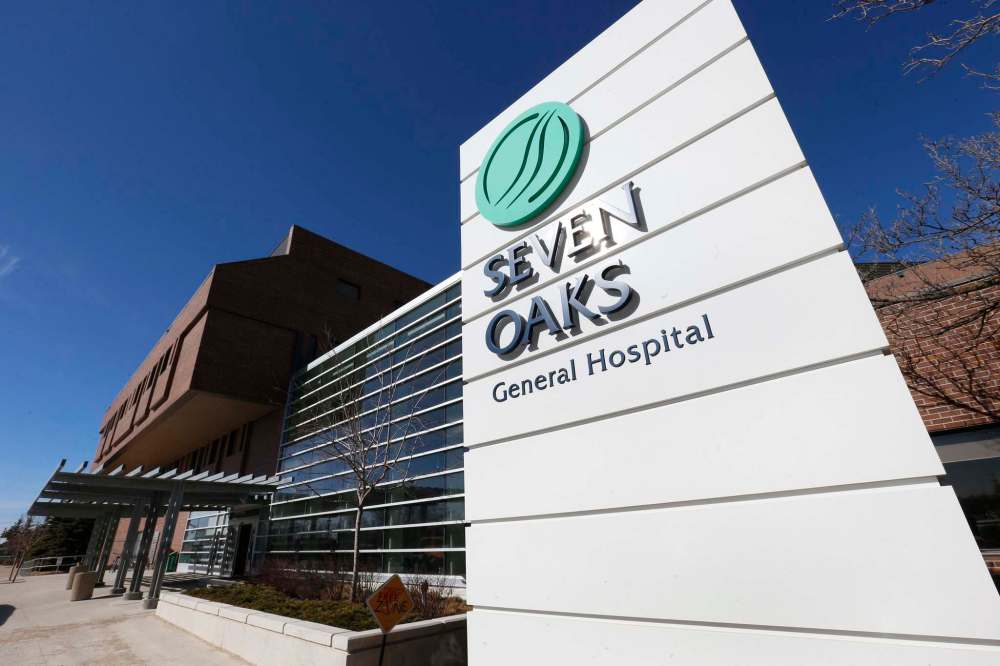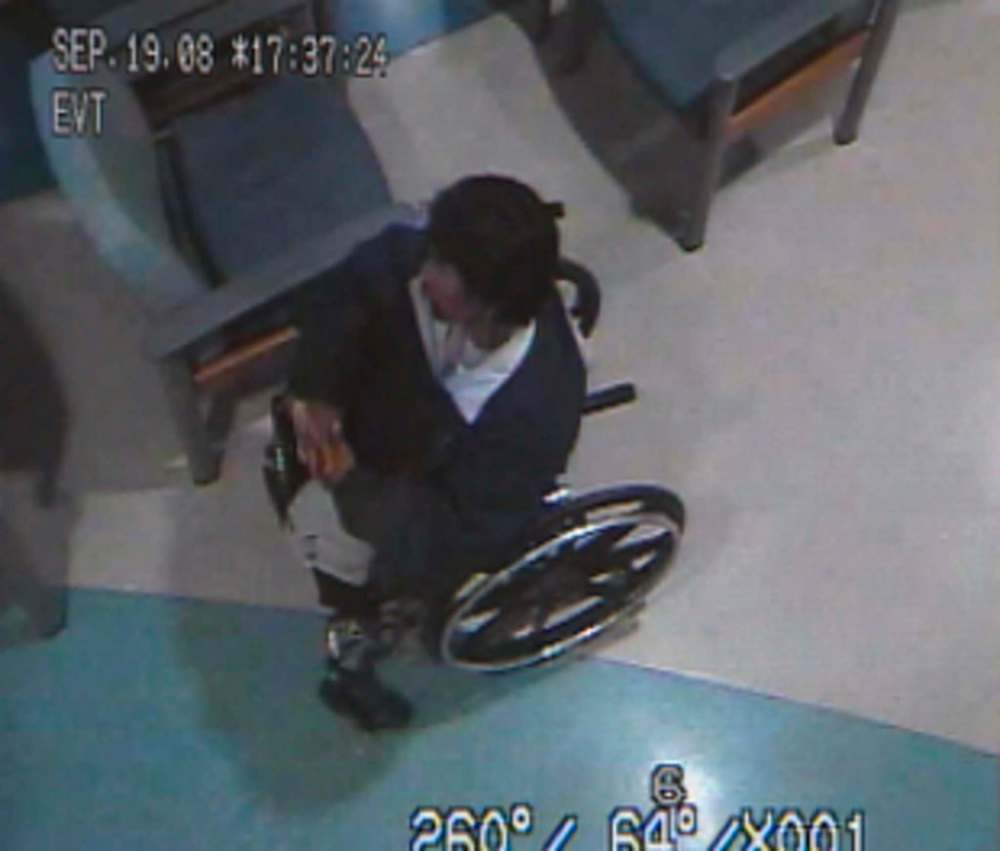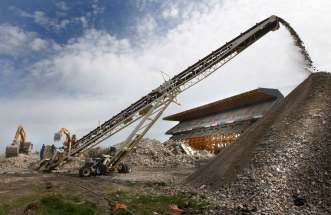Calls to reverse hospital plan not a move forward
Read this article for free:
or
Already have an account? Log in here »
To continue reading, please subscribe:
Monthly Digital Subscription
$0 for the first 4 weeks*
- Enjoy unlimited reading on winnipegfreepress.com
- Read the E-Edition, our digital replica newspaper
- Access News Break, our award-winning app
- Play interactive puzzles
*No charge for 4 weeks then price increases to the regular rate of $19.00 plus GST every four weeks. Offer available to new and qualified returning subscribers only. Cancel any time.
Monthly Digital Subscription
$4.75/week*
- Enjoy unlimited reading on winnipegfreepress.com
- Read the E-Edition, our digital replica newspaper
- Access News Break, our award-winning app
- Play interactive puzzles
*Billed as $19 plus GST every four weeks. Cancel any time.
To continue reading, please subscribe:
Add Free Press access to your Brandon Sun subscription for only an additional
$1 for the first 4 weeks*
*Your next subscription payment will increase by $1.00 and you will be charged $16.99 plus GST for four weeks. After four weeks, your payment will increase to $23.99 plus GST every four weeks.
Read unlimited articles for free today:
or
Already have an account? Log in here »
Hey there, time traveller!
This article was published 03/07/2019 (2353 days ago), so information in it may no longer be current.
If Winnipeg emergency rooms are in crisis today due to long wait times, bed shortages and staffing crunches — as critics claim almost daily — then they’ve been in crisis a long time, well before the Pallister government launched its health-care reforms.
Patients may be facing unacceptable delays, but overcrowding in city ERs is no worse today than it was under the previous NDP government. (In fact, wait times have improved slightly.)
The Opposition NDP and the Liberals claim the Pallister government’s sweeping changes to Winnipeg’s hospital system have created a “crisis” in health care. That plan, launched more than two years ago, will have Grace Hospital, Health Sciences Centre and St. Boniface Hospital serve as the city’s three acute care facilities, while Concordia, Seven Oaks General and Victoria General hospitals will provide services for lower acuity patients, each with their own urgent care centres.

The stated goal is to consolidate emergency and specialty services, instead of having resources spread out among six facilities. By concentrating them, health officials say higher-acuity patients will get better and more immediate care, while reducing transfers between facilities.
The problem is the Winnipeg Regional Health Authority has not planned well for the changes.
Emergency departments have been closed without adequate bed and staffing capacity in place at the remaining acute care centres. Doctors and nurses have bolted prematurely from Concordia and Seven Oaks, leaving ERs scrambling for staff.
It’s those planning deficiencies critics have seized on — and they’re exploiting them with as much political bluster and hyperbole as they can to create the perception the system is in crisis and to argue the Pallister government should abandon its reforms.
The NDP and Liberals are calling for the reopening of ERs at Concordia and Victoria, and are demanding the WRHA go back to the six-hospital system.
The question is, would reverting to the old model solve anything?
Complaints of staff shortages, long ER wait times and a lack of medical beds in the system are age-old.

Under the former system, Manitoba had the longest (or among the longest) ER wait times in the country for successive years. There was no shortage of emergency department horror stories during that time.
Brian Sinclair was ignored for 34 hours in an understaffed HSC ER in 2008, before dying of a treatable bladder infection.
Heather Brenan died after she was sent home in a taxi in 2012, following a four-day stay in an overcrowded ER at Seven Oaks.
A year later, two men, just days apart, died outside their homes after being discharged by taxi from Grace Hospital’s ER.
In 2015, Mohinder Singh was left suffering in excruciating pain at Seven Oaks ER for more than two hours, as her family pleaded with staff for help. It wasn’t until she lost consciousness that Singh was transferred to HSC, where she died of a brain aneurysm.
The list goes on.
The “crisis” described by critics is not new, nor are the lengthy wait times patients often endure.

However, the long-term trend shows wait times have decreased modestly over the past two years.
Since the consolidation launch, median ER wait times across Winnipeg have averaged 1.68 hours, slightly below the 1.98 hours from April 2014 to April 2017. Wait times have grown since October 2017, when the WRHA closed Misericordia Health Centre’s urgent care facility and converted Victoria’s ER to an urgent care centre, but the delays are still marginally lower than in the years leading up to the changes.
There have been other modest improvements, too.
The length of stay for ER patients admitted to hospital awaiting a medical bed is down somewhat compared to pre-2017 levels. And the number of seniors in hospital awaiting long-term care placement has declined sharply, as have wait times to get into a nursing home.
Still, there have been serious problems with the implementation of the hospital reorganization plan. In many areas, the execution has been a disaster. Those problems need to be fixed.
The solution, however, isn’t to go back to the old system.
Canadian Institute for Health Information data shows Manitoba had among the worst ER wait times in the country under the previous model. The longest wait for nine out of 10 patients was three hours nationally in 2016; in Manitoba it was 5.5 hours. The same measurement for ER patients admitted to hospital awaiting a medical bed in 2016 was 29 hours in Canada; in Manitoba, it was 40.

What is needed is better planning and execution of the blueprint that is on the table.
The system needs change, there’s little doubt about that. The jury is still out on whether the current plan is the right one or not, but, on paper, the consolidation approach seems to make sense.
It should be given a chance.
tom.brodbeck@freepress.mb.ca

Tom has been covering Manitoba politics since the early 1990s and joined the Winnipeg Free Press news team in 2019.
Our newsroom depends on a growing audience of readers to power our journalism. If you are not a paid reader, please consider becoming a subscriber.
Our newsroom depends on its audience of readers to power our journalism. Thank you for your support.

















